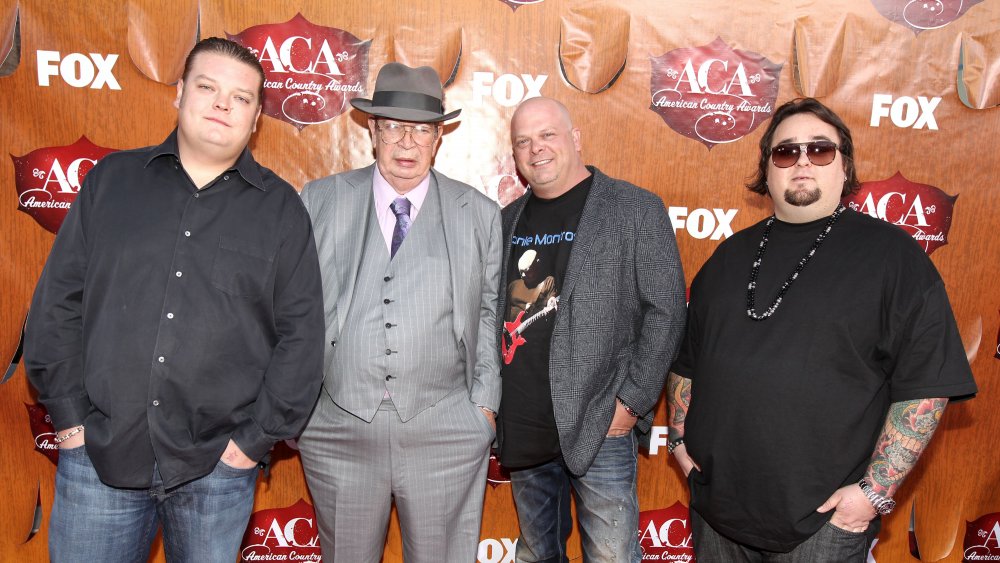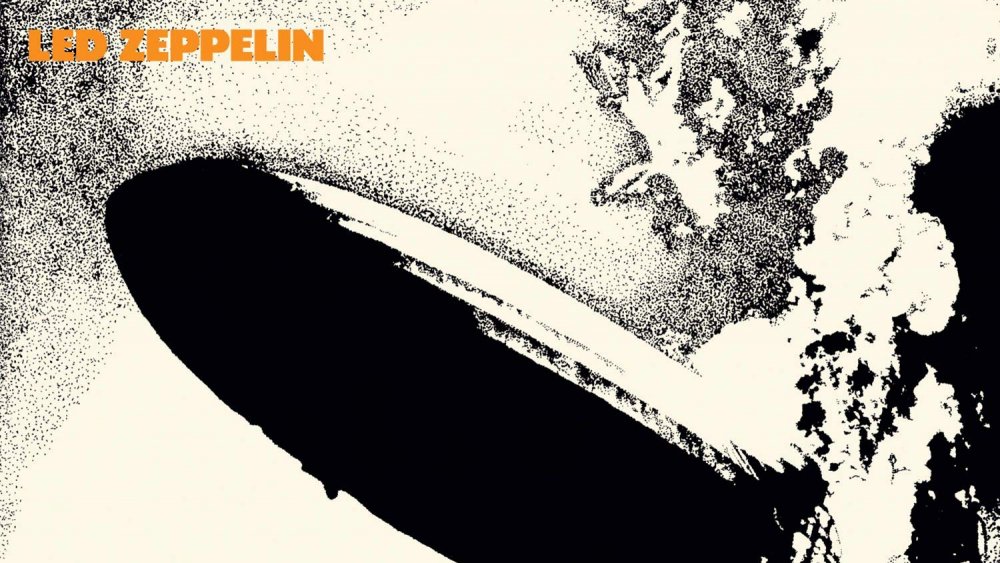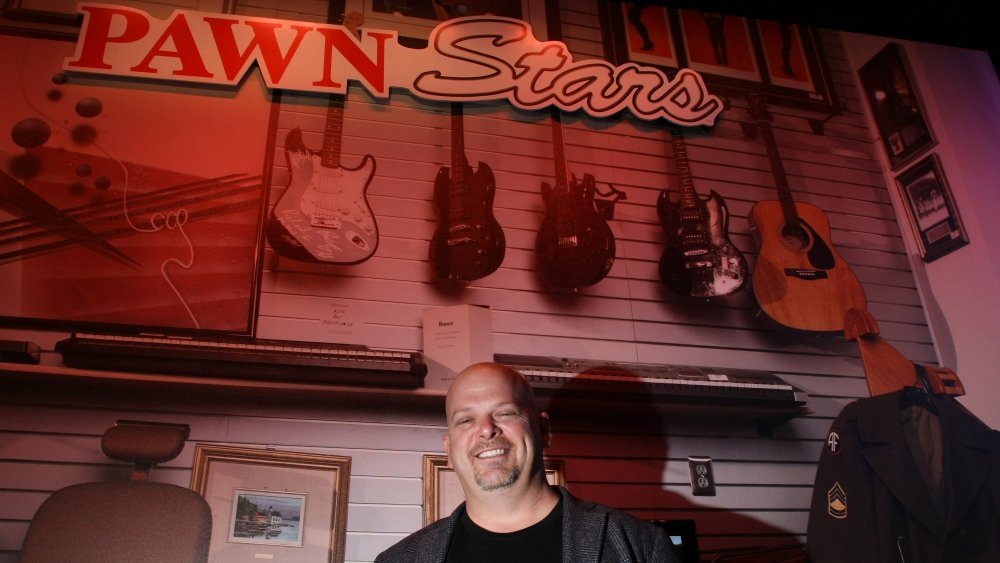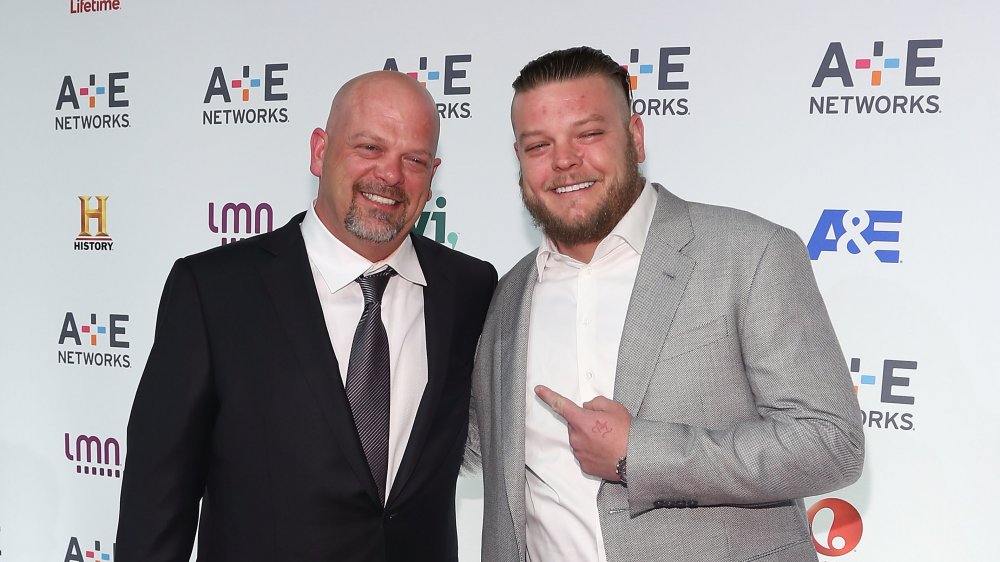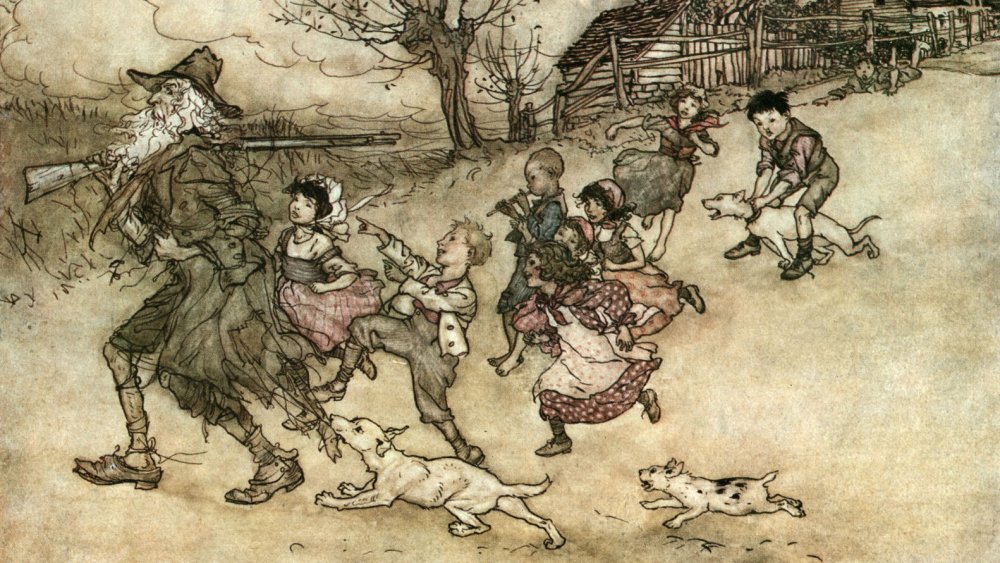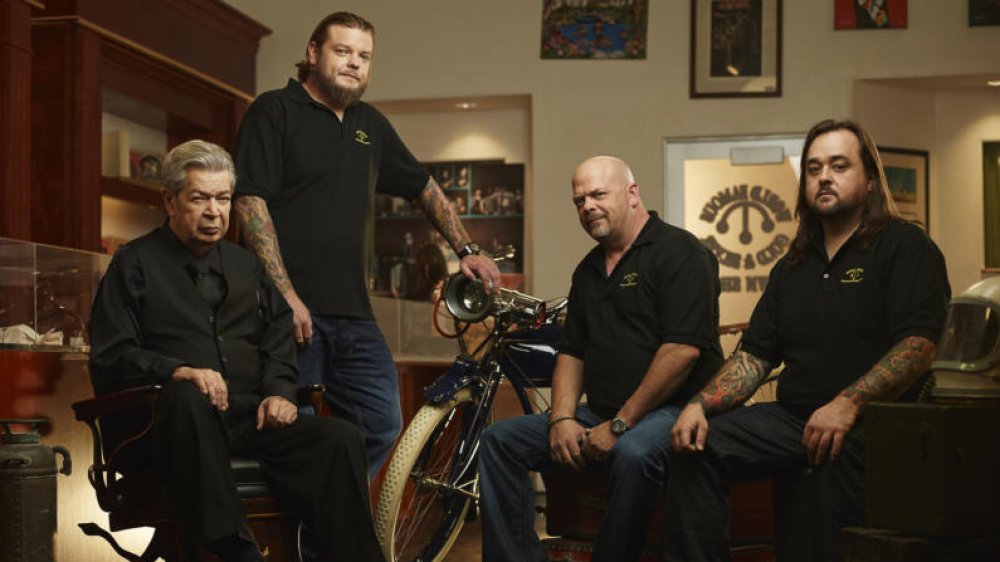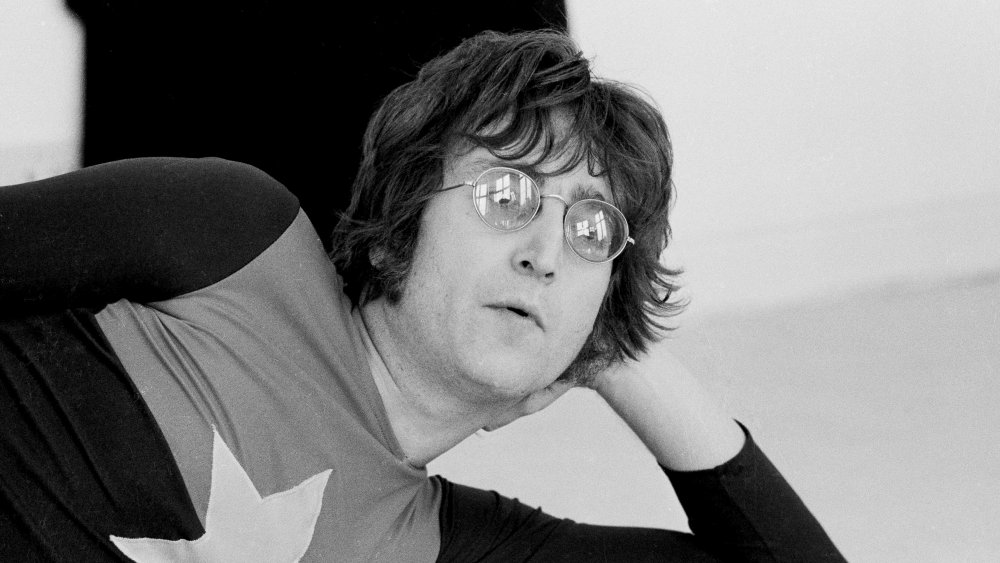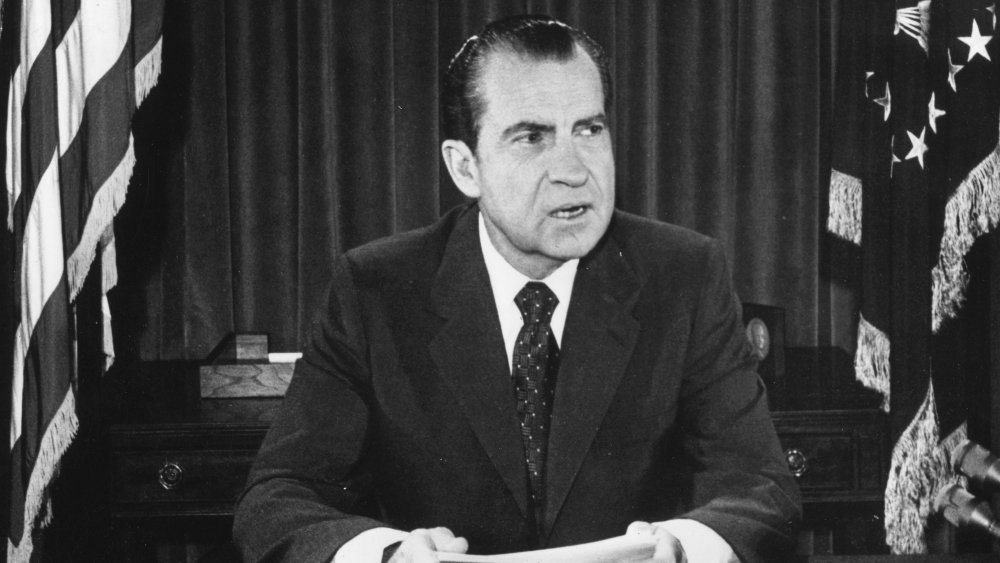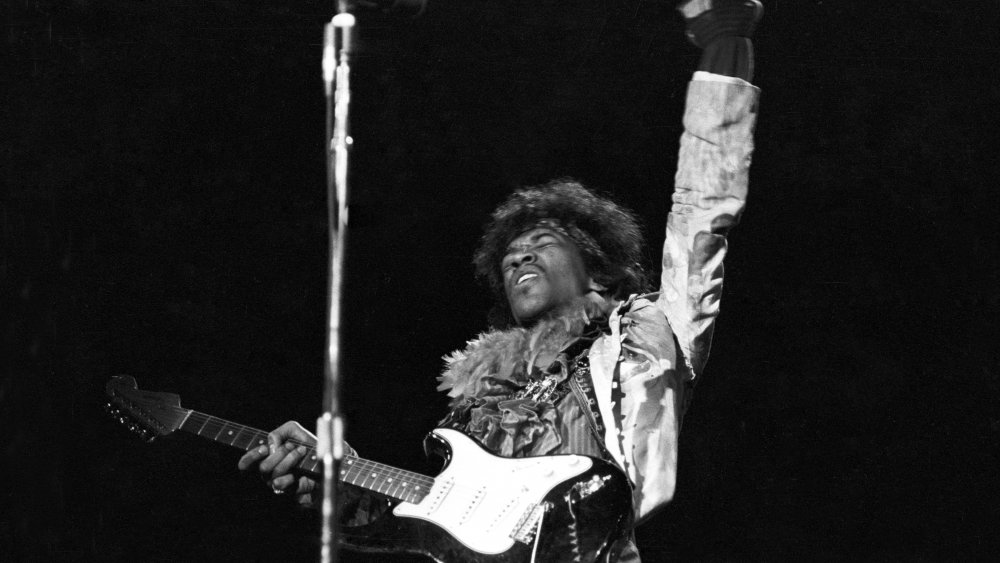Times The Pawn Stars Crushed These Sellers' Dreams
We've all been there: You're cleaning out your parents' attic, perusing a garage sale, or strolling through a flea market, when suddenly, you stumble across something decades old that you just know will bring in a financial windfall. You may take your find to an auctioneer or you might list it online. Does it bring in the big bucks? Well ... maybe. Anyone who's watched Pawn Stars knows it's far from guaranteed. How often have fans watched someone make the pilgrimage to the World Famous Gold & Silver Pawn Shop only to be disappointed in their item's lacking worth? The number is, at this point, beyond counting.
Naturally, there are times on Pawn Stars where sellers are left flabbergasted by the worth of their items, and walk out with a wad of cold, hard cash. That's part of the appeal of the show. But also appealing, if in a very different way, is watching sellers bring items into the shop that aren't nearly as valuable as they think. The drama is undeniable as the seller is left disappointed, if not downright angry, by Harrison and company's final offer. These are the times Pawn Stars sellers had their dreams most brutally crushed, from the hopeful hawkers of vintage vinyl to the disappointed motorcycle merchants.
Not a whole lotta love for Led Zeppelin
Led Zeppelin is one of the most iconic groups in rock history, so it's easy to assume the band's memorabilia is uniformly valuable. A prospective seller finds out the hard (rock) way, however, that this isn't always true when he brings in a signed copy of the band's debut album. Harrison is taken aback by the fact that all four of Led Zeppelin's members signed the album. The deal breaker, though, is that Page signed the front of the album, while Plant, Jones and Bonham all signed the back, by their respective photos. Since the seller is asking for $22,000, Harrison expresses a couple of concerns: Whether or not the signatures are real, and just how devalued the item is by Page's signature being on the wrong side.
Steve Grad, an autograph authenticator, confirms the signatures to be real — but, like Rick, he is bothered by Page's signature. He values the signed album at $10,000 to $12,000. High-end collectors want all the signatures to be displayable, as the authenticator tells the agitated seller. Harrison ultimately offers $8,000 for the album. The seller counters with an asking price of $17,500, which prompts Rick to boost his offer to $8,500. At that point, negotiations cease, and just like the rendering of the Hindenburg disaster that graces the cover of Led Zeppelin's debut album, the seller's dreams of making a whole lot of money come crashing down. Oh, the humanity!
Madonna's day planner not in vogue
Madonna is a modern music legend, so you'd think anything written in her hand would bring in big bucks, right? That's what one potential seller thinks when he brings one of the pop icon's handwritten planners into the pawn shop. The journal is dated 1988, and contains numerous phone numbers from famous folks like Cher, Jane Fonda, and Warren Beatty. The seller approaches Corey Harrison with the item, who admits that while he's never seen such a unique item, he isn't that familiar with Madonna memorabilia. On top of that, the seller wants $25,000. The signature expert, Steve Grad, is called into the shop to verify the authenticity of the item. Grad is initially excited to see the item because Madonna is generally inaccessible to fans, making her "one of the most valuable modern era celebrities."
Despite his praise of the item, which he determines to be authentic, he appraises the planner to be worth $10,000 to $12,000. The seller balks at the valuation, saying he's been offered more for the planner before. Since the pawn shop is in the business of making money by reselling items, Harrison offers the seller $4,000 for the day planner, which the seller calls "insulting." He drops his asking price to $20,000 and Harrison counters with a $5,000 offer. In the end, the seller leaves the shop with the journal in hand.
Locked but not loaded
One seller has his dreams of big money shot down when the antique pistol he carries into the shop is appraised at a value far below his expectations. This seller brings in a .44 Colt Walker pistol designed in 1847, and proposes a hefty price tag of $50,000. With so much money at stake, Rick Harrison calls in a weapons expert to determine the pistol's value. The appraiser says only one make of the .44 Colt Walker has significant value, because it was manufactured in Belgium. The pistol in hand, however, does not have the Belgian proof mark, which reads "LG," and thus the appraiser says it is "impossible" to tell what the weapon really is and where it comes from.
Reacting to the bad news, the seller says he won't let the pistol go "for anything less than $10,000" ... and then the scenario goes from bad to worse as Harrison offers $3,000. With a counteroffer of $6,000 from the seller, Harrison immediately declines, and tells the seller to "have a good one."
Motorcycle sale? No Caan do
A celebrity owner boosts the value of most items, but apparently a motorcycle once owned by James Caan, who played Sonny Corleone in The Godfather, is just a motorcycle. A seller finds out that cold, hard fact when he rolls into the back lot of the World Famous Gold & Silver Pawn Shop on a custom-made motorcycle once owned by Caan.
The seller asks for $22,000 for the motorcycle, but Corey Harrison seems only slightly impressed with the fact that it was owned by Caan and built by acclaimed motorcycle designer Eddie Trotta. He calls in a buddy to look it over. The appraiser puts a $10,000 price tag on it, and Big Hoss tells the seller that the only way he could sell the motorcycle would be to pull the motor, transmission and drivetrain out of it. He adds that he could get a drivetrain from a used motorcycle worth only $5,000. The sale is doomed from there. If only James Caan had the same mystique as the late James Dean, or a star from a motorcycle-centric movie like Easy Rider. Perhaps then, a sale could have been made.
Out of tune with a Stradivarius violin
Chumlee breaks the heartstrings of a seller when he reveals an extremely rare Stradivarius violin isn't, in fact, a Stradivarius at all. The seller brings the heavily weathered stringed instrument into the pawn shop, looking for $700,000. But Chumlee is concerned by the instrument's poor condition, despite its legendary provenance. Chum's suspicions are confirmed when Aquiles Figueroa, owner of the Stradivari House of Phoenix, comes in to examine the violin. After explaining why Stradivarius violins can be worth millions, Figueroa points out several flaws of the violin that the maker never would have made. Despite a label inside the instrument claiming it was made in 1731, the seller's violin isn't authentic: Figueroa believes it to likely be an homage made anywhere from the 1830s to the 1960s. Mass-produced in the millions and in poor condition, the instrument's value is "not a lot." The seller takes this well, saying he's going to hang the violin on his wall at home as an homage to his grandfather.
Ripping up a seller's dreams of rare books
Vintage books can be big business, especially when first editions of famous tomes are involved. Unfortunately, sellers often bring in what they believe to be a first edition, only to find out their book is worth only a bit more than the paper it's printed on. This is the case for one seller and his copy of Rip Van Winkle, the Washington Irving classic originally published in 1819.
When the seller presents the book to Rick Harrison for a tidy price of $1,500, the pawn star is leery about buying it in its condition. On top of that, the title page notes that the publication date is 1909. But since the book is loaded with stunning images, the seller offers the idea that his copy of Rip Van Winkle is a first edition with illustrations. Intrigued by the idea, Harrison calls in his friend Rebecca Romney, whom he calls "one of the top 20 book experts in the world."
Romney notes that the illustrations were done by Arthur Rackham, whom she calls "The king of the Golden Age of Illustration." A first edition Rackham can fetch about $9,000 ... but the seller's copy is not one of those copies, which makes her value the book at about $300, and only because of its "beautiful plates." After some back-and-forth, Harrison buys the book for $75.
A hairy Carey situation
Autographs can be extremely valuable. Sometimes, though, even the rare find of roughly 200 signatures on a single document doesn't bring the windfall a seller expects. This is what one seller finds out to his peril, when he brings in a rawhide parchment presented to silent movie legend Harry Carey, signed by "a who's-who of Hollywood in 1941," including iconic actors like Clark Gable, Judy Garland, and John Wayne, and famed filmmakers including John Ford, Cecil B. DeMille and Elia Kazan.
Looking to get $16,000 for his unique document, the seller is dumbfounded when Rick Harrison says he is troubled by the way the autographs are all bunched together, thus affecting their value. To be sure, Harrison calls in his frequent autograph appraiser, Steve Grad. While Grad authenticates the autographs and deems it "a cool piece," he only values the document at $5,000.
At first, the seller doesn't budge from his $16,000 ask. But when given Grad's appraisal, he drops the price to $12,000. The seller ultimately walks away from any potential deal when Rick only offers $3,500.
All you need is art
Apart from the work they produce as actors and/or musicians, some performance artists are also, well, artists. This makes the things they create, like paintings or drawings, uniquely valuable — even if we're only talking about a sketch. John Lennon was one such multi-talented artist, as he created drawings and fostered his art aspirations at the Liverpool College of Art before he joined the Quarrymen, which eventually became the Beatles.
One of Lennon's purported works enters Rick Harrison's orbit when a seller brings in a sheet of paper containing nine panels of the musician's bespectacled self-portrait, along with a signature at the bottom. Given Lennon's iconic status in the history of pop culture, the seller asks for $20,000 for the piece, but Harrison, in an uncharacteristic move, doesn't even have to call in a buddy to verify its authenticity. In fact, Harrison merely flips over the paper the doodles are "drawn" on to reveal that it was done on Kodak computer paper — a sort of paper that didn't exist before Lennon died in 1980. At least the seller is spared the agony of being burned: He notes that he bought the piece for $10 at a small thrift shop.
A tricky Dick Nixon book to sell
Richard Nixon has the distinction of being the only American president to resign from office, but that doesn't make anything associated with him worth any less. So when a seller offers Rick Harrison an opportunity to buy a signed copy of the man's 1978 autobiography, RN: The Memoirs of Richard Nixon, Harrison is interested "because presidential stuff does well."
Purchased for 50 cents by the seller at a garage sale, Nixon's 1,100-page memoir was sold to its publisher for over $2 million. The seller says he did some due diligence and brought the book to the Richard Nixon Presidential Library, which valued the item at approximately $2,500. It wasn't completely authenticated by the library, but the seller claims the institution thought the signature was real. Throwing caution to the wind, the seller asks Harrison for $2,200. Harrison calls in expert Rebecca Romney to verify the authenticity of the book. Romney says the signature is indeed real, but the book isn't a first edition, dropping its value down to $250. "I just crush hopes and dreams — it's just part of my job, sorry," Romney tells the seller. Harrison offers him $100, but after some haggling, they agree on a purchase price of $125.
Caught up in a purple haze of deceit
Jimi Hendrix might have died young, but he left behind an incredibly rich body of work. So when anything written in Hendrix's hand enters his pawn shop, Rick Harrison is completely in tune. A seller grabs his and Corey Harrison's attention when he walks into the shop with a sheet of paper containing poetry that Hendrix purportedly wrote. He believes he can get up to $100,000 for the artifact, but asks for $15,000.
Thinking the poetry find could be "worth a fortune," Rick Harrison brings in a forensic document examiner to analyze the sheet. Said examiner immediately points out that Hendrix wrote his lyrics in ballpoint pen, not the felt-tip marker used for the poetry. Moreover, the poetry's stylings don't match up with examples of Hendrix's writing. Most importantly, the signature is the same size as the poetry — not one of Hendrix's hallmarks. Hendrix's actual signature on a similar document is "three or four times larger" and "much more flamboyant." Plus, the last name in the signature looks more printed than written. In just a few minutes, the seller's dreams of the Hendrix document's worth, much like the legendary musician's guitar at the 1967 Monterey Pop Festival, goes up in flames.
